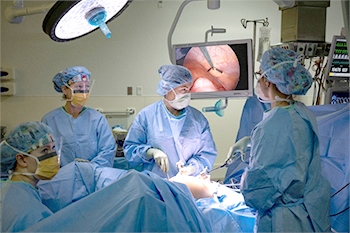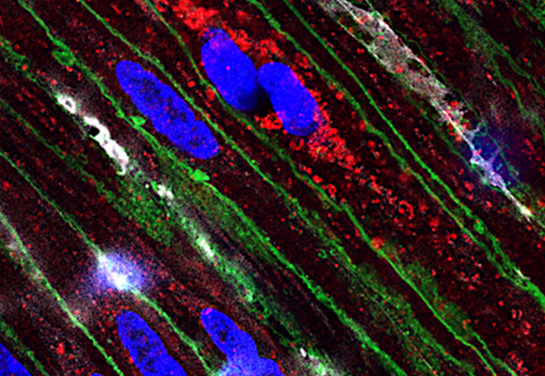A call to gynecologic surgeons to reduce excess opioid pills after hysterectomy
Study finds patients use only half of opioid pills prescribed after the procedure
A new UC Davis Health study updates the recommendations surrounding opioid prescriptions after hysterectomy, the surgical operation to remove the uterus. The researchers studied the current patterns of opioid prescribing and consumption after the operation.

Their study, published in the Journal of Minimally Invasive Gynecology, urged the surgeons to respond to the opioid epidemic by reducing excess opioid pills after hysterectomy. It encouraged them to provide both the smallest effective prescription size and helpful resources for safe opioid disposal.
“Surgeons are playing an unintentional role in the opioid epidemic with excess prescription of opioids for postoperative pain,” said Bahareh Nejad, professor of obstetrics and gynecology, director of robotic surgery at UC Davis Health and co-author on the study.
Managing pain after the surgical removal of the womb
Opioid pain relievers are generally safe when taken for a short time and as prescribed by a doctor. In some cases, they can lead to addiction, overdose and death.
The researchers followed 113 women undergoing hysterectomy for non-cancerous indications at the UC Davis Medical Center. They obtained participant preoperative and surgical information through chart review and the patient’s pain report. During the third week after the operation, each participant completed a telephone interview, including a direct count of remaining opioid pills and an assessment of satisfaction with pain management.
The operations varied between vaginal, robotic-assisted, conventional laparoscopic and abdominal hysterectomies. They were performed by 19 surgeons, mostly general gynecologists.
Pain medication use after hysterectomy
The researchers used oral morphine equivalents (OME) as a unit to measure prescribed and consumed opioids. For example, one 5-mg tablet of hydrocodone is equivalent to 5 OME.
Patients who had abdominal hysterectomies were prescribed the most opioids and for the longest duration. Other patients were prescribed similar amounts, with those undergoing the vaginal procedure given the shortest duration.
The study also found that the average opioid consumption was about half of the prescription. The median quantity of opioids prescribed was 150 OME - compared to 75 OME consumed. The amount of OME taken did not vary significantly by the type of operation. Only 20% of participants with leftover opioids reported an FDA-compliant opioid disposal plan.
Half of all participants reported that they experienced less pain than expected. One in five women did not use any opioid medication and about 80% reported taking ibuprofen at least on some days. However, those who went for a hysterectomy due to pain consumed more opioids.
Patient satisfaction linked to opioid prescription
The study showed that one-third of patients felt they had received too many opioid pills. The amount prescribed was correlated negatively with pain management satisfaction.
“It was fascinating to find that participants receiving the minimum opioid prescriptions reported the highest satisfaction scores,” Nejad said.
The median OME prescribed for those with the highest satisfaction was 150, compared to 375 for those least satisfied.
Co-authors on the study are Kelli M. McEntee, Kaitlin D. Crawford, Machelle D. Wilson, Matthew D. Ponzini, Brenda T. Wu, and L. Elaine Waetjen
Article: McEntee et al. (2020). Postoperative Opioid Prescribing and Consumption after Hysterectomy: A Prospective Cohort Study. Journal of Minimally Invasive Gynecology, https://doi.org/10.1016/j.jmig.2020.10.023



